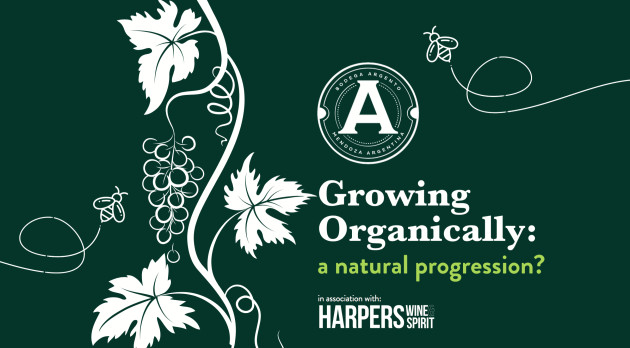
Tapping into organic growth
Organic can be a powerful cue for consumers, but only if the right buyers are targeted in the right way.
This was a key message at Harpers second Growing Organically – A Natural Progression webinar, which brought together leaders in the field to debate ‘Engaging the Consumer’.
On the upside, as Mark Palmer, co-founder of Cawston Press, whose organic marketing credentials stretch back 20 years to the founding of Green & Blacks chocolate, buy-in to organic products continues to rise.
“The tide comes in and out with organic, but each time it comes in, it comes in stronger,” said Palmer.
Moreover, he added that consumer behaviour during the current recession – caused by a global health crisis – appears to be bucking a trend that typically sees consumer retrenchment with regard to purchasing organic.
IWSR research presented at our first Growing Organically webinar, looking at organic viticulture, predicted that organic wine sales will rise from a 2.8% share of the global wine market in 2019 to 4% by 2024.
There is, however, still a long way to go to capitalise more fully on the opportunities that an organic label offers, with an uphill push needed to capture the attention of many consumers.
James Scott, group insight director at C&C Group (owner of Matthew Clark and Bibendum), highlighted the challenge facing those invested in organic, hoping to turn heads with eco-friendly credentials.
“There is an increasingly planet-centric consumer, and growth, but you also have to recognise that 37% of the UK population aren’t concerned about or actively reject environmental issues, it’s just not on their radar,” Scott reported.
He added: “41% will look to buy sustainable, organic products, if they can afford it, or if they remember to, but it’s not front of mind to them. So we’re only really talking about 22% of the market for whom organic and sustainable products are front of mind.”
Drawing on insights from the C&C ‘Portraits’ community, analysing and extrapolating from the responses of 8,000 consumers in the past few weeks, this translates to around 7.5 million adults in the UK that are receptive to the organic message.
However, this still doesn’t mean that organic wine will trot off the shelf of its own accord.
As Scott said, the messaging needs to be clearer, and consumers – even those receptive to organic purchasing – are often confused by the profusion of sustainability-related options, of which organic is one part.
“At the moment we are confusing them, because we’re not having clarity of communication around what is organic, the context of sustainability, the context of biodynamic, and also the context of ‘naturalness’, which in other [non-wine] product categories is used alongside organic, but not with wine, which is causing more confusion.”
With research revealing that an average consumer will typically absorb only up to six words on a wine label before making a purchase decision, and ‘organic’ ranking somewhere between six and seven in order of importance to that decision, it’s clear that different strategies are needed for the category to make itself more widely heard, and also how it aligns with wider sustainability credentials.
For Sara Norell, director at Systembolaget AB monopoly in Sweden, this means taking a more holistic approach, growing consumer understanding of how organic fits in the bigger picture of sustainable wine production. Packaging and transportation must be part of the broader picture too, she added.
Palmer expanded on this, saying that it is important to differentiate marketing, to attune it to the receptiveness of a given level of potential consumer engagement.
“It’s about getting your message hierarchy in the right order. Good brands always have depth and many layers, so it’s about the right message in the right place,” he stressed.
“All of these messages are important, but they need to be delivered with the right level of emphasis to the right audience, being clear about your proposition, to empower the fans of your brand to tell others and to keep the story flowing.”
All agreed, nonetheless, that organic is continuing to be a long-term underlying trend and will continue to grow as consumers introduce the concept to each other.
“They just needs to be given the right tools to allow then to spread the word,” Palmer concluded.
You can watch the full recording of Growing Organically – A Natural Progression (Part 2: Engaging the Consumer) webinar is available here.
You can watch the full recording of the complimentary Growing Organically – A Natural Progression (Part 1: Viticulture & Winemaking) webinar here.
Keywords:
- Bibendum
- Environment
- Organic Wine
- Sustainability
- C&C Group
- Soil Association
- systembolaget
- consumer engagement
- webinar
- Growing Organically
- A Natural Progression
- Mark Palmer
- Cawston Press
- Lee Holdstock
- James Scott
- ara Norell




